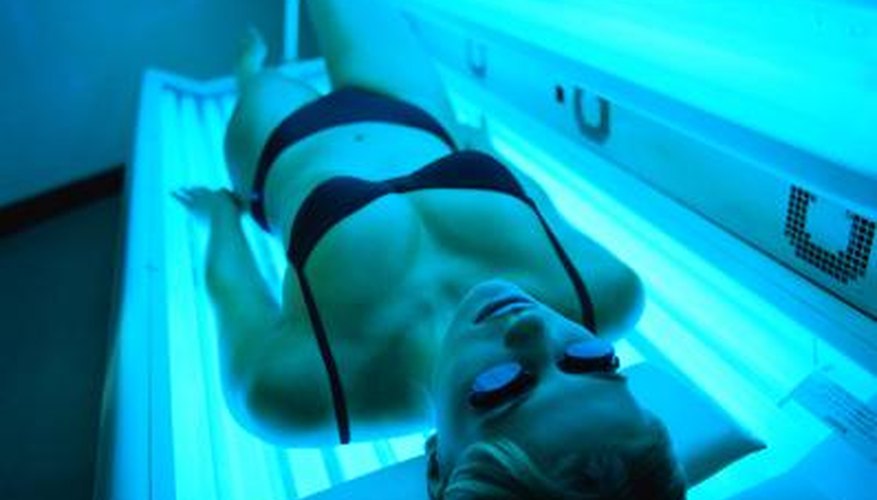Those who frequent a solarium see benefits to artificial tanning over regular sunlight. Before you head to the salon, however, it is important to know the advantages and disadvantages of solarium use. Knowing the benefits and risks of artificial tanning and ultraviolet radiation will help you make an informed decision about whether it is right for you.
Function
A solarium is also referred to as a sunbed or tanning bed. Both the sun and sunbeds emit ultraviolet (UV) radiation that effectively causes the skin to tan. What makes solariums different from natural light is that they bombard the body with concentrated UV rays to speed up the tanning process.
Advantages
Proponents of solariums often mention the aesthetic benefits of a sunbed. Tans are fashionable, regardless of the season. In today's culture, the pressure to look good makes solariums seem appealing. People who use sunbeds also claim to be more relaxed and happy. Because UV light helps provide and synthesise vitamin D, sunbeds aid in that process. Finally, tans provide some protection against UV rays' harmful effects.
- Proponents of solariums often mention the aesthetic benefits of a sunbed.
- Because UV light helps provide and synthesise vitamin D, sunbeds aid in that process.
Disadvantages
The World Health Organization has analysed solarium use and its general effect. Despite the cosmetic, psychological and nutritional appeal of artificial tanning, solariums are not as good as they seem. While it is true that a solarium helps provide vitamin D, natural sunlight mixed with diet is safer and just as effective. Tanning beds have been linked to many skin conditions, like premature ageing and skin cancer. Over time, they can also damage the eyes and even weaken the immune system, resulting in vulnerability to infection. Although artificial tans do provide protection against the sun, the WHO reveals that this defence is relatively weak. In fact, fake tans have a sun protection factor (SPF) of only two to three. Compare that to a typical sunscreen at your local chemist, which has an SPF of at least five.
- The World Health Organization has analysed solarium use and its general effect.
- In fact, fake tans have a sun protection factor (SPF) of only two to three.
Warnings
There is no reason why a solarium cannot be used safely. To that end, the WHO has some recommendations to reduce the risks associated with tanning. First, avoid excessive tanning. This means waiting at least 48 hours between sessions, which is the minimum amount of time required for skin to repair. Always wear UV protective goggles when using a solarium. Be aware of any drugs you are taking, such as antidepressants, antibiotics and diabetes medication. These and other drugs can reduce the skin's ability to withstand UV radiation.
- There is no reason why a solarium cannot be used safely.
- To that end, the WHO has some recommendations to reduce the risks associated with tanning.
